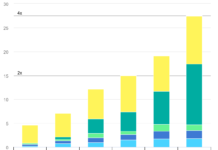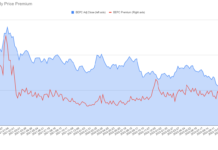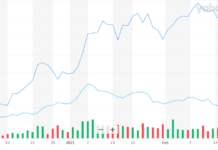Is the time right to invest in alternative energy? We’ve seen a lot of this before in the 1970s and 1980s. Solar and biomass hot, big regulatory pushes, and then companies and investors lost a lot of money when things changed. We’re still a bit skeptical. We’re also all about not getting pulled in to each and every overpriced hype (read, the ethanol race) – but fundamentals are fundamentals. And they’re hard to ignore and pretty darn impressive. We think the real question today is not “are alternatives a good investment?��?, but “which ones have legs and make a good investment bet?��? In four words – broad-based critical mass – Unlike alternative energy of yesteryear, this alternative energy explosion has been slowly building for 10 to 15 years, and is reaching critical mass in multiple markets. Take a couple of examples – the solar market is on pace for a $20 Billion per year number globally within 3 years (SolarBuzz.com), across several major jurisdictions (in the 1980s we were talking less than 5% of that). World ethanol production is on the order of $12 Billion/year. In the US wind capacity production has growing at 25%+ per year for the last 2 years wind generation capacity additions have been second only to gas-fired generation adds in the US mix. “It’s the global economy, stupid��? – Don’t forget, this is global now, and it wasn’t really like that 25 years ago. The US pioneered solar photovoltaics, but Japan and Germany (with China catching up) are the biggest markets today. The US pioneered large scale wind power (remember Altamont Pass?), but 3 of the top 4 wind turbine companies today are European. The US engineered cap and trade in carbon, but Kyoto is a European driven engine. Lots of examples of why it’s not just us anymore. For an investor worried about the legs of the industry, that’s a really big point. In two words – cost structure – alternative energy is still more expensive than conventional energy – that’s why we call it “alternative��?. But the cost curves for each and every alternative energy source have fundamentally changed for the better over the last 10 years (NREL), are moving into striking distance, and continue to improve. This trend is not going to reverse, so it’s just a matter of time. In three words – carbon, carbon, carbon – The carbon credit trading market, driven by Kyoto protocol was $21.5 Billion in the first 3 quarters of last year (World Bank and IETA) – that’s up from virtually zero three years ago. Now we’re talking real numbers. The US has been left out of this so far, but not for long. California is committed, the Democrats are in control of Congress, and we will likely be seeing a strengthening of some sort of cap and trade system before long. The bottom line – alternative energy is cool and the consumer cares. Of all this activity, it’s really high gas and electricity prices and climate change that have put alternative energy on the map in the consumers minds. And they care. And they vote. And they blog. And they are buying hybrids, uneconomic hybrids, lots of them. And as the battery technology continues to advance (think lithium ion overtaking nickel metal hydride), they’ll start buying HEVs and Plug-in HEVs in massive quantities. And they are buying green power. And little pieces of paper certifying their green power. In enough quantities for Toyota and Walmart and GE and Google to brand green as part of their core strategies. How’s all that for impact? And finally, the regulations are here. Don’t kid yourself, alternative energy has ALWAYS been a regulatory driven market. But now the regulations are pretty widespread. Take electric power, for example – it’s not just the federal production tax credit anymore, or just the solar tax credit, or the state solar subsidy programs – 23 US states now have Renewable Portfolio Standards for electricity production (Pew Center) , including Texas, California, Pennsylvania, Arizona, Illinois, etc. That’s up from 1 in 1991. Put another way, if you could swing the electoral votes from just the RPS states, you’d have a landslide presidential victory. Yes, it’s still possible that if oil and gas prices prices fall back to 1990s levels (we expect them to pull back somewhat, but are scared to make a precise prediction) and we have 5 or 6 normal, cool winters that make the climate change debate disintegrate, then a new political wave will come in (in 30 different western countries), and each and every major alternative energy regulatory program along with all the consumer demand will collapse – in a dozen major nations worldwide. But as the saying goes, that ain’t the way to bet it. Author Neal Dikeman is a founding partner at Jane Capital Partners LLC, a boutique merchant bank advising strategic investors and startups in cleantech. He is the founding contributor of Cleantech Blog, and a Contributing Editor to AltEnergyStocks.com.









Excellent summary. One more reason to invest in Alt-E *now* is the oil price, a psychological driver for alternative energy. It’s been years since people have been this complacent about the oil price, but peak oil isn’t going away… unless it’s already passed. Any oil price drop will be temporary.
Agreed – this summary pulled me out of my post-State of the Union-media analysis malaise!
I hope in my dreams that the global market can pull (with a friendly US Congress, thats willing to listen) the US market along… and that some real progress can be made.
Either way – I agree that there’s going to be a profitable alt-energy marketplace for investors to play in! Even in non-ideal conditions…
Nice post Neil Dikeman!